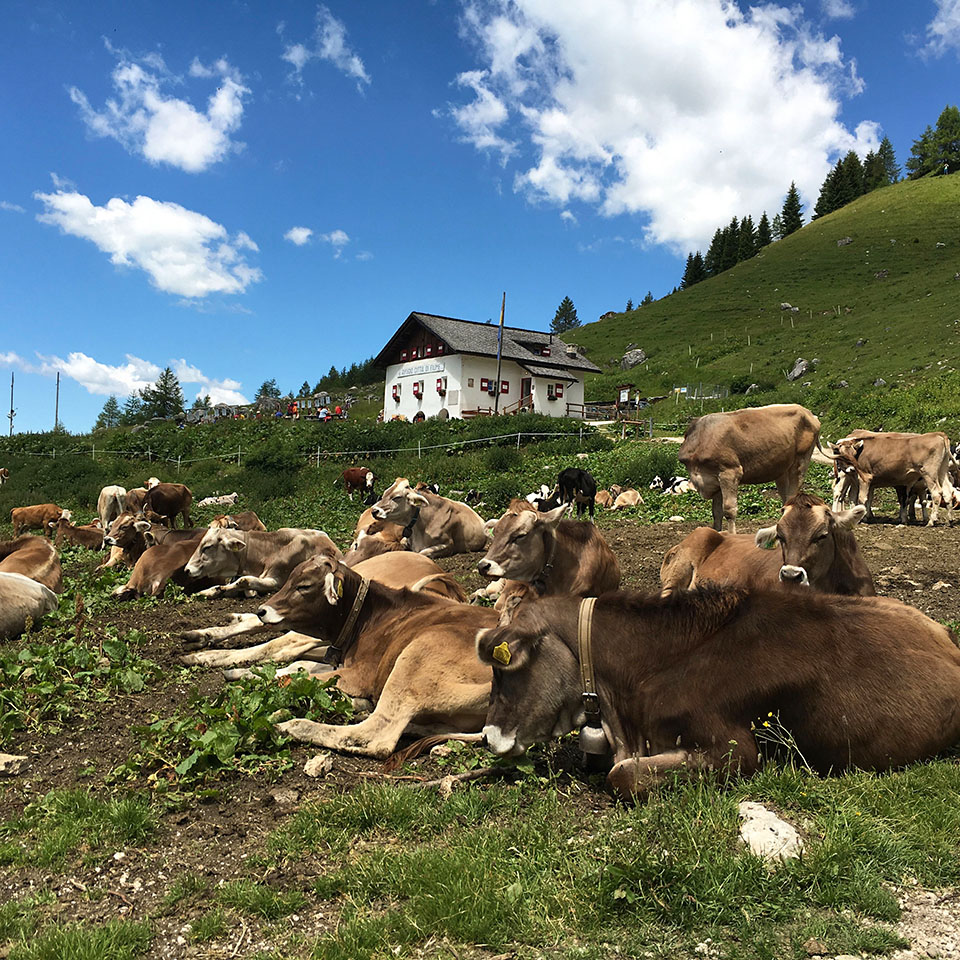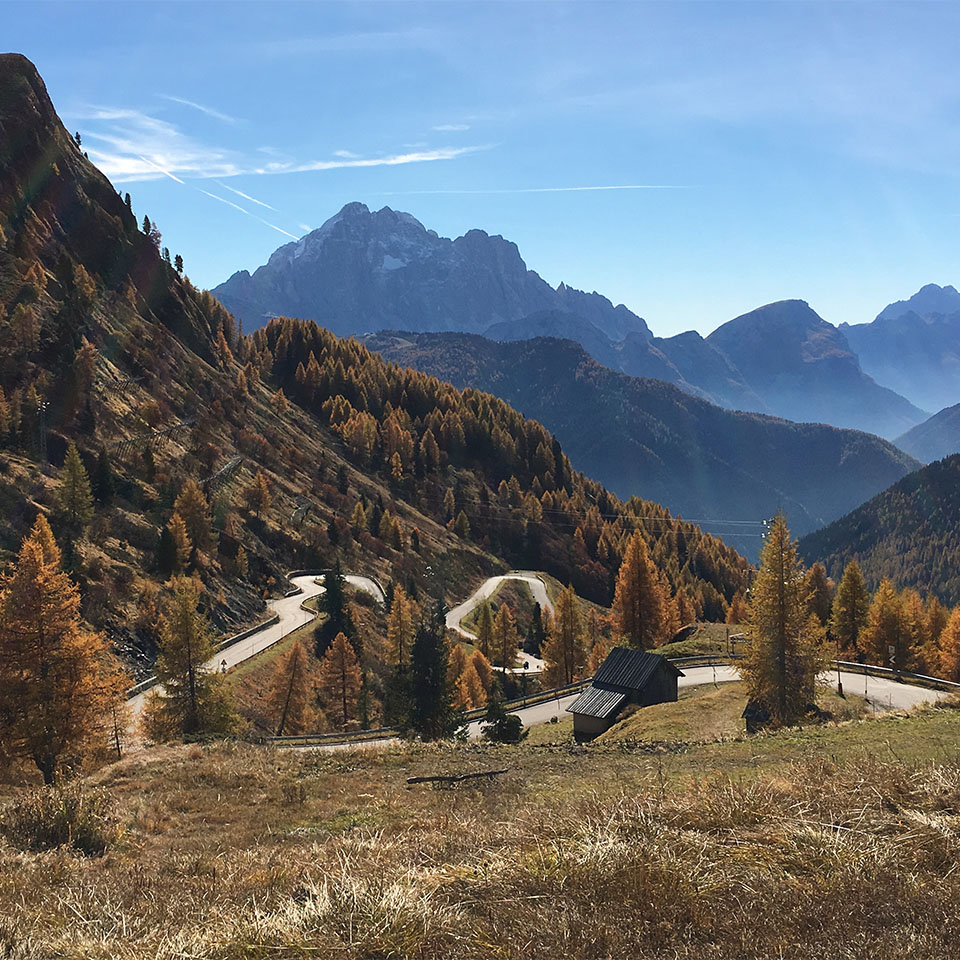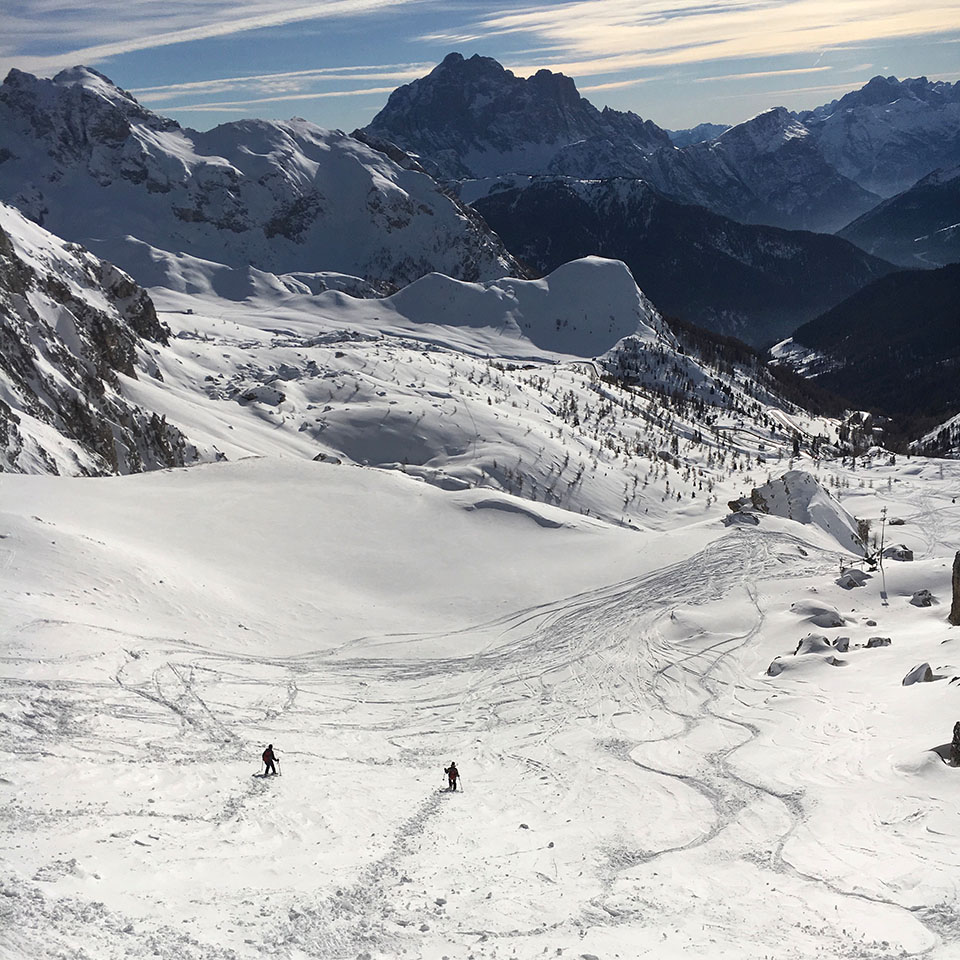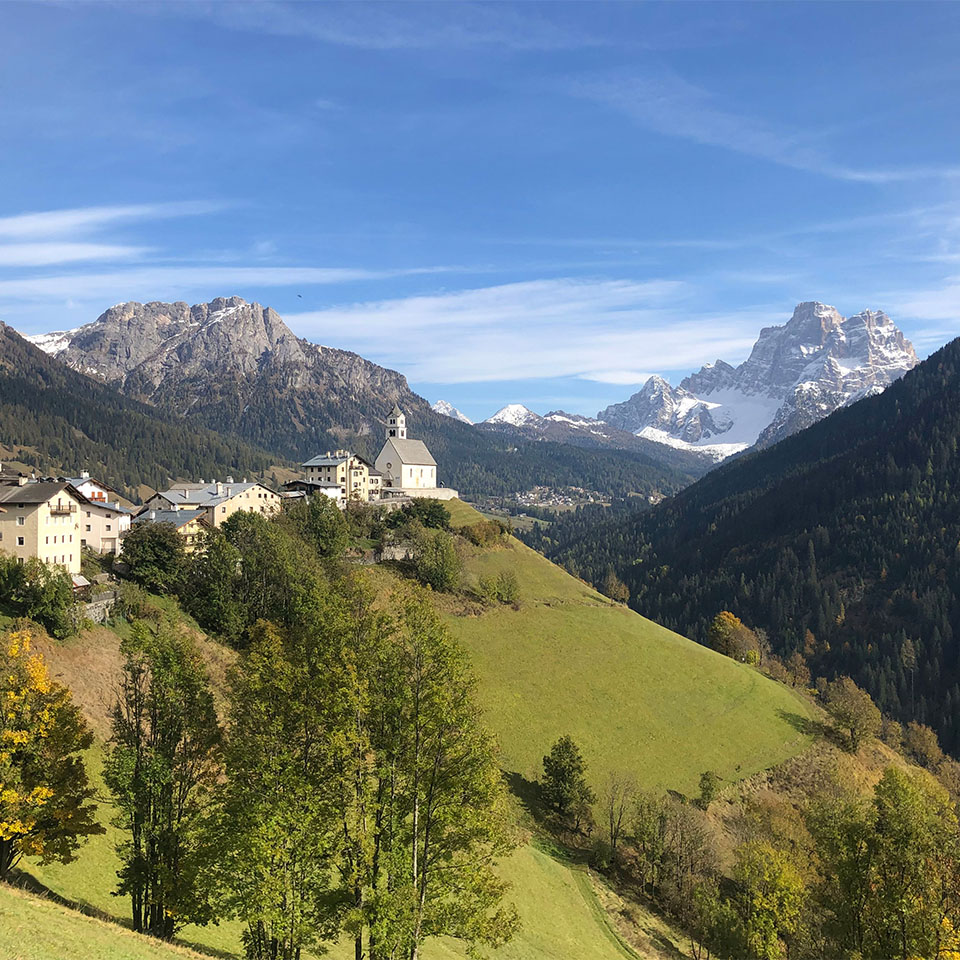
The Dolomites offer a variety of hiking and climbing opportunities, from easy village walks to full-day trips in the high mountains. Trails include Lago di Coldai, Croda di Lago, routes around Averau, and paths toward Fanes.
For experienced hikers, the Via Ferrata (“iron road”) offers historic routes built during the First World War, providing a challenging and unforgettable experience.
Casa Tie is an ideal base for cyclists of all levels. Famous mountain passes such as Passo Giau, Passo Pordoi, Passo Gardena, and Passo Valparola are within easy reach. You can explore the stunning mountains, ride the extensive trails in Val Fiorentina, or follow the Transalp Route, which passes almost directly by the house, offering unforgettable cycling experiences.


With 1,200 km of slopes, Dolomiti Superski is the largest ski area in the world. From Casa Tie, the nearby Civetta ski area offers 80 km of pistes, while other regions are easily reached by car, making day trips to the Sella Ronda or the Gran Guerra tour convenient. Cross-country skiers can enjoy trails for all levels at Pescul and Palafavera, ensuring options for everyone.
In 1987, a Mesolithic cemetery was discovered above the Val Fiorentina, revealing finds from the Middle Stone Age, including the skeleton known as Mondeval Man. The region’s official language is Ladin, an ancient tongue rich with its own traditions and stories. Until 1923, after the First World War, Val Fiorentina (then Buchenstein) marked the border with Austria, which is why German is still spoken by some locals today.
